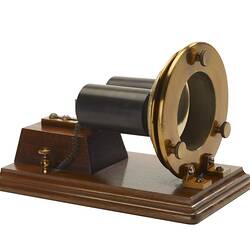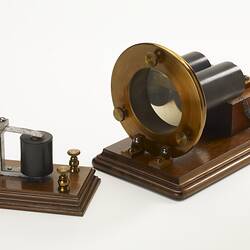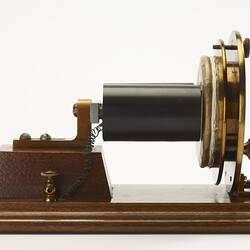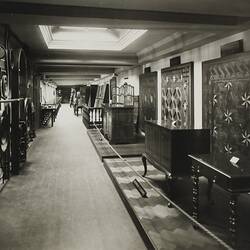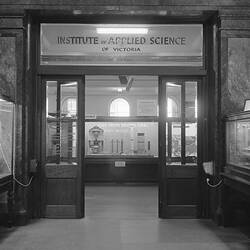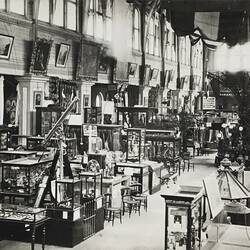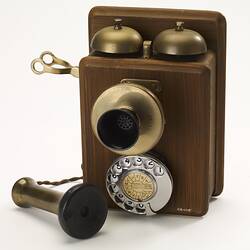Summary
Bell double- pole magneto transmitter, constructed in the first half of 1876
This transmitter (or microphone) was used for experiments by Alexander Graham Bell, probably manufactured by Thomas Watson. The transmitter was used in conjunction with the harmonic telegraph receiver. It was acquired by Bell's uncle E. S. Symonds during a visit to the Bell family in Brantford, Ontario and taken by Symonds to Australia.
In a typical experiment, a transmitter was connected by wires to a receiver. Someone then spoke loudly into the transmitter -- loudly because the transmitter was very inefficient. This caused the diaphragm (indicated) to vibrate, producing electric currents in a coil. The currents then travelled along wires to a receiver, which converted the currents back into sound.
Physical Description
Varnished wood base. brass terminals, dual pole electromagnet wound with green silk- covered wire on black bobbin, with ebonite covers. Round brass diaphragm stretcher with three thumbscrews for adjustment. Electromagnet resistance 10 ohms. In wooden box.
More Information
-
Collecting Areas
-
Acquisition Information
Loan & Subsequent Donation from Mr Charles O.V. Moody, by Jul 1990
-
Past Owner
Mr Edward S. Symonds, Melbourne, Greater Melbourne, Victoria, Australia
Past Owner or User. -
User
Mr Alexander G. Bell, Boston, Massachusetts, United States of America, 1876
-
Manufacturer (Probable)
-
Classification
-
Category
-
Discipline
-
Type of item
-
Overall Dimensions
265 mm (Length), 160 mm (Width), 170 mm (Height)
-
Keywords

